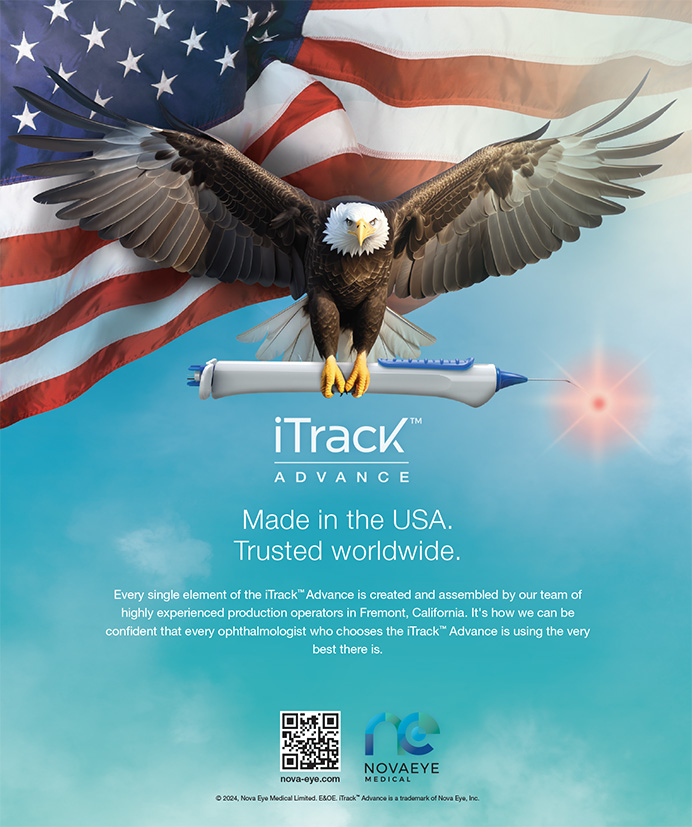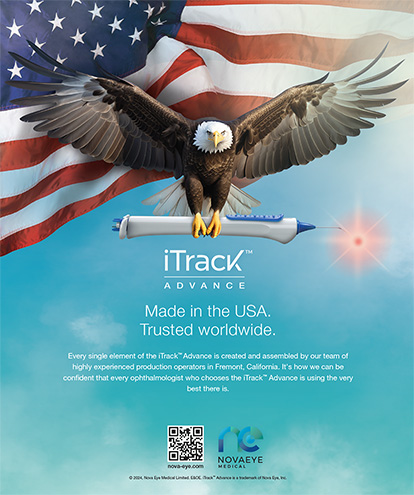Premium IOLs can achieve visual outcomes that are superior to what traditional IOLs can provide. Ensuring patients' satisfaction with advanced IOL technology, however, can be challenging. Clearly, the most important preliminary step is to educate patients and set realistic expectations. Even so, those who receive superb preoperative counseling may still feel significant disappointment over their visual outcomes or other postoperative matters. By carefully evaluating preoperative tests such as topography, surgeons can identify important issues that they must address and discuss with patients prior to the procedure.
DRY EYE DISEASE AND MEIBOMIAN GLAND DYSFUNCTION
Preoperative corneal topography provides an extensive amount of useful information about potential candidates for premium IOLs. All of the available corneal topographers can analyze the status of the cornea or the precorneal tear film. The first step in interpreting corneal topography is to determine whether the image obtained is of high quality. In patients with preexisting dry eye disease and/or meibomian gland dysfunction, preoperative topography may be unreliable. These conditions can cause the image to appear asymmetric and/or irregular.
Places on topographic maps where the image appears to drop out, often seen as white areas, are a major indicator of dry eye disease. For example, Figure 1A shows a topographic map for a patient interested in presbyopic correction with IOLs. Significant portions of the image drop out, and irregular astigmatism is evident. Based on these topographic findings, it was apparent that the patient had either dry eye disease or meibomian gland dysfunction, which had resulted in a poor tear film. A slit-lamp examination revealed significant meibomian gland dysfunction as well as a low tear film volume. The patient received treatment with topical cyclosporine 0.05 (Restasis; Allergan, Inc., Irvine, CA) b.i.d. as well as AzaSite (Inspire Pharmaceuticals, Inc., Durham, NC) OU q.h.s. Two weeks later, he returned, and the topography was more regular (Figure 1B). Just as importantly, the improvement in the health of the ocular surface resulted in more reliable keratometry readings on the IOLMaster (Carl Zeiss Meditec, Inc., Dublin, CA).
A compromised ocular surface can make topographic images appear suspicious for forme fruste keratoconus. For example, the father of a local optometrist was interested in cataract surgery, but the topographic map of his left eye appeared to be irregular with a number of dry spots (Figure 2A). I instructed the patient to instill artificial tears every 2 hours. Topography from the next day (Figure 2B) provided more information on his ocular state but still looked very suspicious for forme fruste keratoconus. I began treating his underlying dry eye disease with Pred Forte (Allergan, Inc.), and topography performed 6 days later revealed more regular astigmatism (Figure 2C).
CONTRAINDICATIONS
Preoperative topography is critical prior to cataract surgery to determine whether a patient is eligible for a premium IOL. Patients with forme fruste keratoconus, keratoconus, or pellucid marginal degeneration are poor candidates for presbyopia-correcting IOLs, because they have a high chance of reduced BCVA from their corneal condition. For example, topography revealed keratoconus with significant inferior steepening bilaterally, despite a normal slit-lamp examination, in the eyes of a patient who was interested in premium IOLs (Figure 3). Alternatives included a toric or a standard IOL. A presbyopia-correcting IOL was not an ideal option for this patient, because he would not have been eligible for a reduction of his astigmatism with incisional procedures. I also felt that he was a poor candidate for surface ablation. Although some surgeons offer PRK for eyes with forme fruste keratoconus and the medical literature supports this treatment option, the situation is different with eyes that have presbyopia-correcting lens implants. In the United States, I do not believe that current excimer laser technology is able to reduce both astigmatic refractive error and corneal asymmetry adequately to achieve a satisfactory quality of vision for a patient with forme fruste keratoconus and a presbyopia-correcting IOL.
EPITHELIAL BASEMENT MEMBRANE DYSTROPHY
Corneal topography can identify patients with irregular astigmatism due to epithelial basement membrane dystrophy (EBMD). Although this condition is visible at the slit lamp, it can be subtle. In addition, it is difficult to know the degree to which EBMD will affect a patient's vision following cataract surgery. I have found corneal topography useful in these cases. It identifies the irregular astigmatism caused by EBMD and allows me to discuss the potential impact of the disease with patients prior to cataract surgery.
CONCLUSION
I routinely use topography to identify patients with corneal conditions that may affect whether or not they are eligible for premium IOL surgery. Moreover, because I am working with an older population of patients, topography occasionally identifies asymmetric or irregular astigmatism due to dry eye disease or meibomian gland dysfunction. In many cases, improving the ocular surface produces better, more regular corneal topographic images, which may make patients eligible for a premium IOL. Although ophthalmologists may not bill insurance carriers or Medicare for the performance of routine testing prior to cataract surgery, I believe that the information obtained from preoperative corneal topography is worth the expense to my practice.
William B. Trattler, MD, is Director of the Cornea Center for Excellence in Eye Care in Miami and is Volunteer Assistant Professor of Ophthalmology at Bascom Palmer Eye Institute in Miami. He has received research grants from, is a consultant to, and/or is on the speakers' board of Allergan, Inc.; Inspire Pharmaceuticals, Inc.; Ista Pharmaceuticals, Inc.; Sirion Therapeutics; and Vistakon Pharmaceuticals LLC. Dr. Trattler may be reached at (305) 598-2020; wtrattler@earthlink.net.


